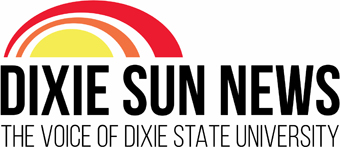Dixie State University is on its way to not only diversifying students but faculty as well.
According to statistics from DSU’s Human Resources department, eight percent of DSU’s full-time faculty in 2013 listed themselves as having an ethnicity other than white, and 11 percent listed themselves as having an ethnicity other than white in 2017.
President Biff Williams said goal No. 4 of the strategic plan is DSU’s primary diversity goal, and some of the desired outcomes of that plan are to double the number of female administrators (deans or higher), have at least 10 percent of administrative positions (deans or higher) filled by racial and ethnic minorities, and increase the total number of faculty and staff of ethnic and racial minorities to at least 15 percent by fall 2020.
“The ultimate goal for any institution is to have your faculty and staff mirror what your student body looks like,” Williams said.
Besides the strategic plan, other ways of increasing diversity at DSU have been put in place. General Counsel Doajo Hicks received a new position last semester as chief officer of diversity.
“[My position] is really just trying to assist with diversity university-wide,” Hicks said.
Williams said Hicks’ job is to be the person leading goal No. 4 of the strategic plan.
“So with this strategic plan and so many people that are addressing the diversity issues on our campus, we really need somebody that’s coordinating it so we’re all talking to each other,” Williams said.
Besides helping with diversity campus-wide, Hicks has a goal of his own as he works closely with other departments and programs on campus. Hicks said one of his main goals as chief officer of diversity is to not only support and promote the Multicultural and Inclusion Center, but to hopefully one day have students go through the MIC if a minority scholarship or other service is needed instead of the financial aid office.
Besides Hicks’ new position, diversity advocates have also been added to make sure DSU is obeying the law when it comes to hiring faculty and staff.
“We want to make sure we’re not screening out candidates that are viable candidates for purposes other than they’re not qualified,” Williams said.
Human Resources Coordinator Melanie Sponaugle said diversity advocates have the opportunity to serve as voting members on hiring committees for faculty and staff positions with the additional responsibility of recognizing any potential for and preventing discrimination and advocating for historically underrepresented groups.
Diversity advocates help ensure committee deliberation focuses on an applicant’s qualifications, Sponaugle said, without regard to information related to protected class, which includes color, national origin, ethnicity, age, religion, gender, sexual orientation, gender identity/expression, pregnancy, disability or protected veteran status.
“Diversity advocates attend an intensive three-hour training to prepare them to become effective in their role,” Sponaugle said. “This training was developed here on this campus as a result of collaboration between human resources, faculty, the DSU Multicultural Inclusion Center, and the chief diversity officer.”
Sponaugle said this training informs diversity advocates of campus policies and state and federal laws, provides them with strategies for recognizing the potential for discrimination, advocating for underrepresented groups, and ensuring equal opportunity for employment.
DSU does nationwide searches for employment with faculty, Williams said. He said a part of attracting employees to DSU is advertising St. George.
“[Future employees] don’t know about the climate,” Williams said. “They hear Utah and they think snow, mountains and cold. When we advertise and say ‘no we actually have palm trees,’ they are taken back and they don’t believe it.”
